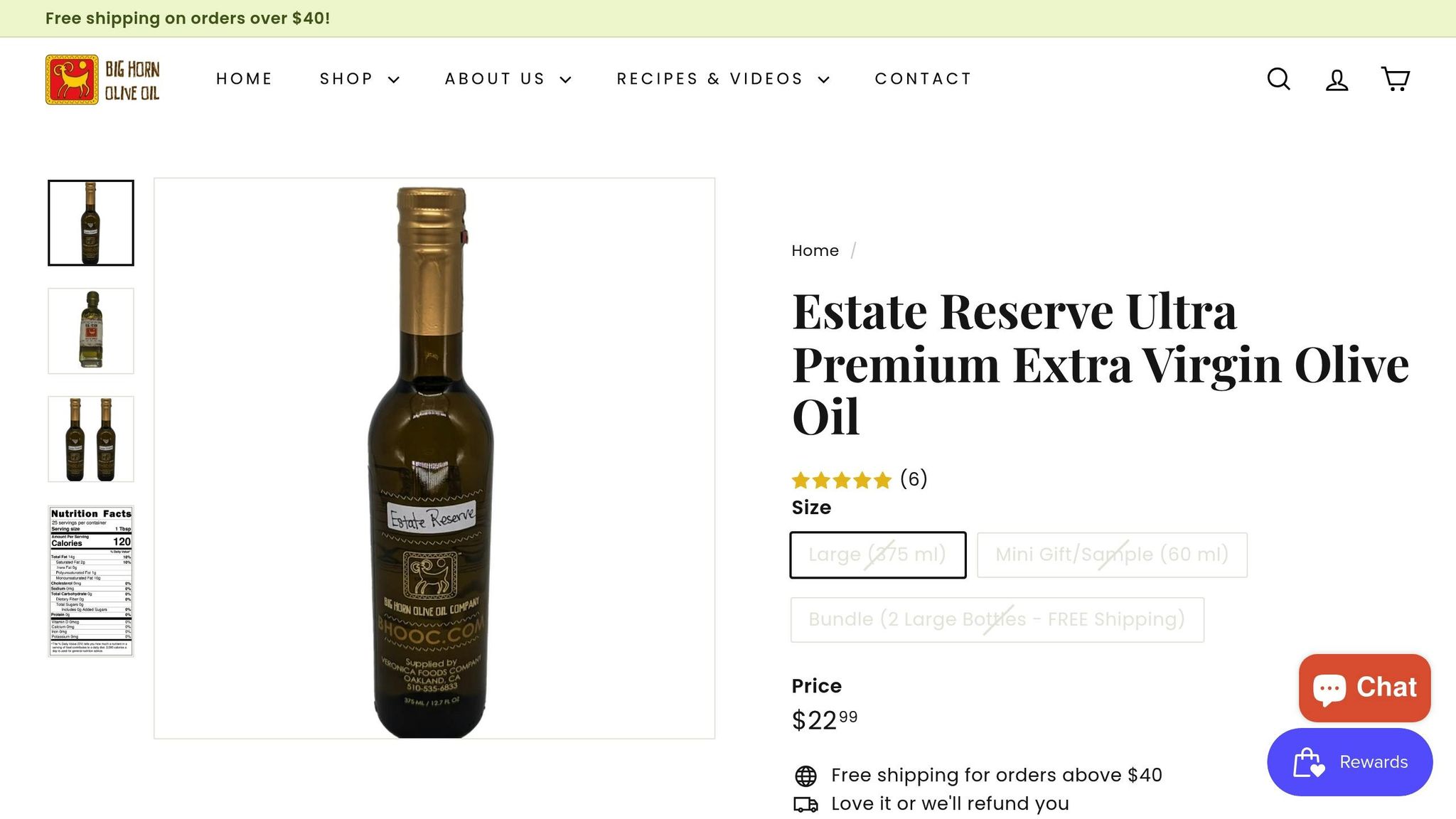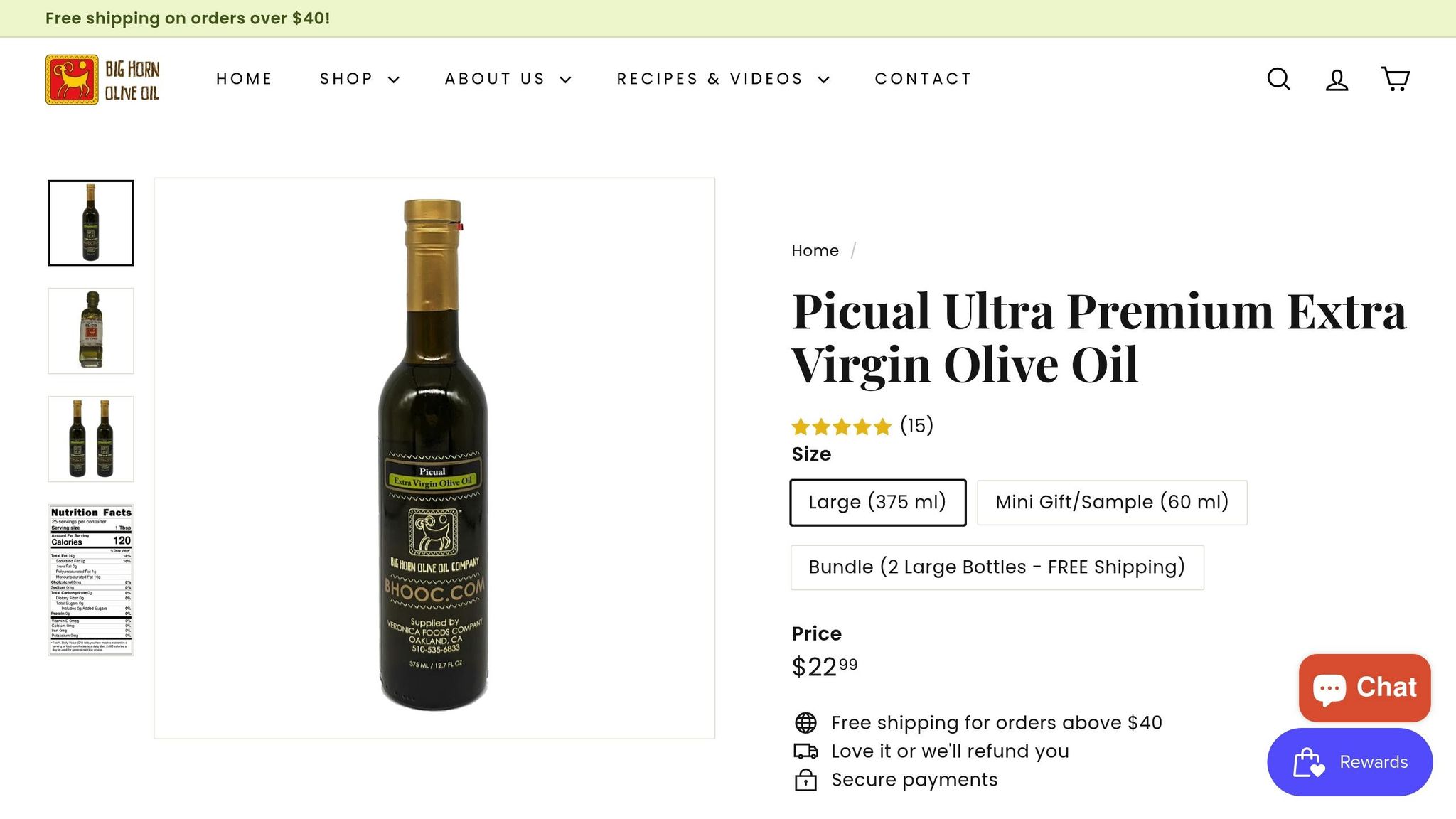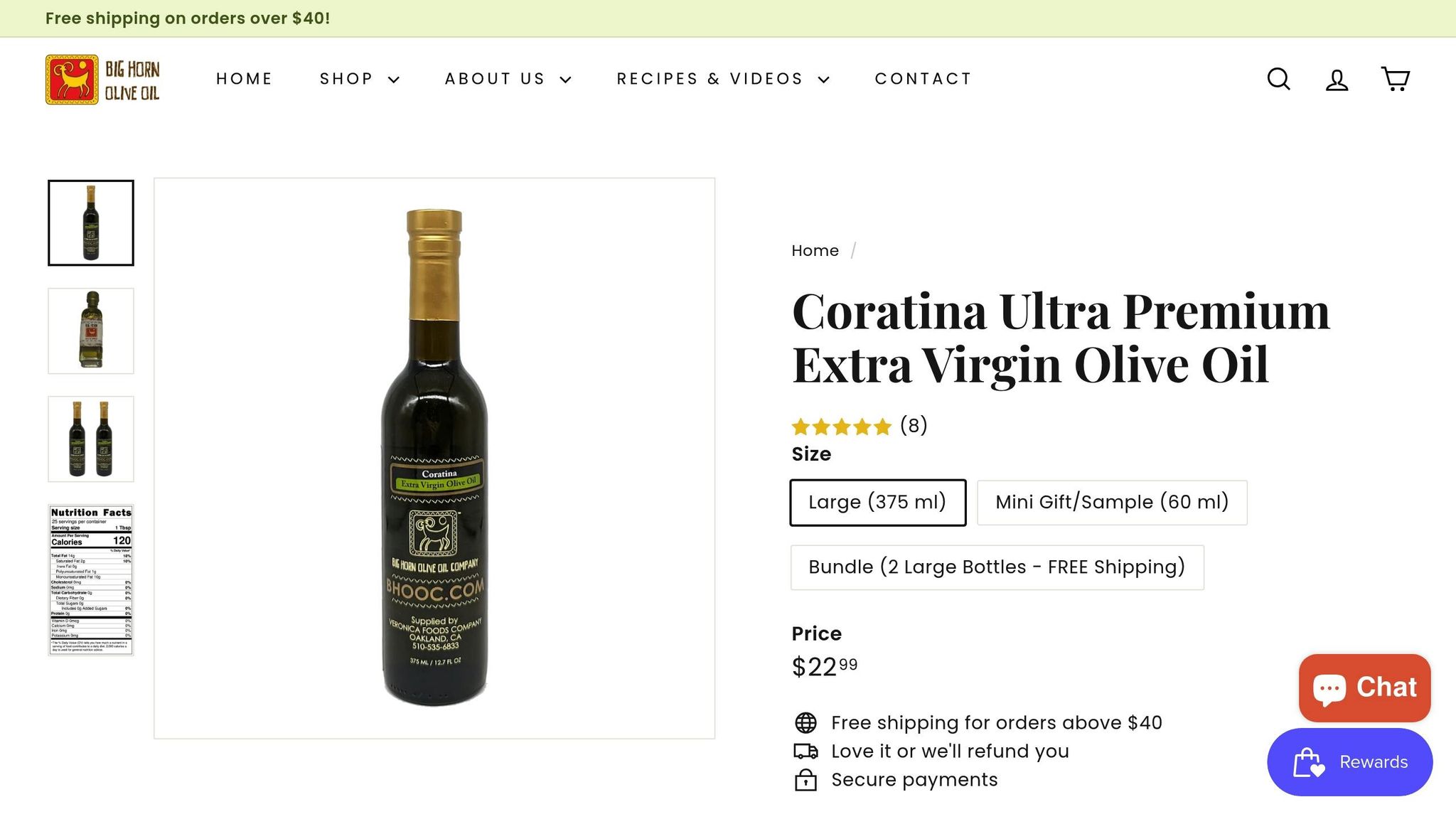How To Pair Violet Vinegar With Olive Oil
Violet vinegar and olive oil can create flavorful, visually stunning dressings and marinades when paired correctly. The key is balancing the floral sweetness and mild acidity of violet vinegar with the richness and intensity of olive oil. Here are the essentials:
- Violet vinegar: Made from steeping violet petals in white wine vinegar, it has a floral, slightly tangy flavor and a vibrant purple hue.
- Olive oil types: Use mild oils like Estate Reserve EVOO for delicate dishes, or robust options like Picual EVOO for bolder flavors.
- Ratios: Start with a 2:1 oil-to-vinegar ratio for salads and adjust for marinades or roasted vegetables.
- Uses: Perfect for spring salads, fruit-based dishes, marinades for chicken or fish, and roasted vegetables.
To make a simple vinaigrette, whisk violet vinegar with olive oil, honey, garlic, and seasoning. Use fresh, high-quality ingredients for the best results.
Foraging Wild Violets & Making Violet Infused Vinegar 🌷🌿
What Is Violet Vinegar: Flavor, Uses, and Appearance
Violet vinegar is created by steeping violet petals in a mild vinegar base, often white wine vinegar. This process draws out the petals' natural color and fragrance, resulting in a one-of-a-kind condiment that embodies the delicate essence of violet flowers.
Flavor Profile of Violet Vinegar
The flavor of violet vinegar is floral with a hint of sweetness and a gentle acidity. It enhances dishes with a subtle sophistication, adding depth without overshadowing other ingredients.
Its mild tang pairs beautifully with rich olive oils, creating a balanced and harmonious blend. This makes it an excellent choice for dressings and marinades, where its soft aroma and nuanced acidity can shine.
Common Culinary Uses of Violet Vinegar
Violet vinegar is a standout ingredient in vinaigrettes, especially for spring salads and fruit-based dishes. Its floral notes brighten fresh ingredients, while its gentle acidity complements delicate greens that might otherwise be overpowered by stronger vinegars.
It’s also ideal for marinades for lighter proteins like chicken or fish. The floral undertones enhance their natural flavors without overwhelming them. Additionally, a light drizzle of violet vinegar can elevate roasted vegetables or grilled fruits, adding both complexity and a touch of elegance.
Visual and Color Appeal
Violet vinegar doesn't just taste exquisite - it looks stunning, too. Its vivid purple hue, ranging from pale lavender to deep purple, depends on the amount of violet petals used during preparation. This natural coloring adds a dramatic visual element, transforming everyday dishes into eye-catching creations.
When paired with golden olive oil, the contrast is striking, especially against light greens or fruits. This makes violet vinegar a favorite for anyone looking to elevate their plating, whether at home or in a professional kitchen.
To maintain its vibrant color, violet vinegar should be stored in a cool, dark place in a sealed glass bottle. Proper storage helps preserve its striking appearance for 6–12 months, though prolonged exposure to light and heat can cause the color to fade over time.
Basic Rules for Pairing Violet Vinegar with Olive Oil
Creating a perfect pairing between violet vinegar and olive oil is all about balance. The goal is to harmonize the floral acidity of the vinegar with the rich, fruity notes of quality olive oil, elevating the flavor of your dishes.
Balancing Acidity and Richness
Violet vinegar offers a gentle acidity with floral undertones, which pairs beautifully with the richness of olive oil. The acidity cuts through the oil's density, while the oil softens the vinegar's sharpness. Together, they create a blend where you can enjoy both the floral sweetness of the vinegar and the complex fruitiness of the oil - without any harshness or greasiness.
The quality of your olive oil is crucial here. Ultra Premium Extra Virgin Olive Oils from Big Horn Olive Oil, for example, retain their fruity character and peppery finish, making them an excellent match for violet vinegar. Lower-quality oils, on the other hand, can throw off this delicate balance.
Once you've achieved this balance, it's time to think about the intensity of the flavors.
Matching Flavor Intensity
Pairing works best when the intensity of each ingredient complements the other. Violet vinegar has a mild to moderate intensity, so it pairs well with olive oils that won't overshadow its floral notes.
For instance, Estate Reserve Ultra Premium EVOO is a great choice because it allows the vinegar's delicate flavors to shine. For dishes that call for bolder flavors, Picual Extra Virgin Olive Oil provides a stronger base while still respecting the vinegar's subtlety.
If you're using a more robust oil like Coratina Extra Virgin Olive Oil, which has a bold and peppery finish, it’s better to drizzle it separately rather than mixing it directly with the vinegar. In such cases, using them as individual finishing touches can prevent one ingredient from overpowering the other.
Finally, fine-tuning the vinaigrette ratio is the last step in achieving the perfect pairing.
Adjusting the Vinaigrette Ratio
The classic 2:1 ratio of olive oil to violet vinegar is a great starting point, but feel free to tweak it based on your taste preferences and the dish you're preparing.
| Olive Oil Type | Best Use with Violet Vinegar | Recommended Ratio (Oil:Vinegar) |
|---|---|---|
| Estate Reserve EVOO | Light vinaigrettes, delicate salads | 2:1 |
| Picual EVOO | Marinades, grilled proteins | 3:1 |
| Coratina EVOO | Roasted vegetables, finishing oil | Separate drizzling |
For spring salads or fruit-forward dishes, stick closer to the 2:1 ratio to let the violet vinegar's floral notes complement tender greens. When working with marinades for proteins or heartier vegetables, a 3:1 ratio allows the olive oil to add richness and protect the ingredients during cooking.
"Always helpful and friendly staff. They will help you pair the perfect vinegars with the perfect oils." – LakeTahoeGem, Google Review (Local Guide)
If you're mixing your dressing ahead of time, it will stay fresh for 2-3 days without refrigeration, making it easy to prepare small batches. Start with the suggested ratios and adjust gradually to get the flavor just right for your dish.
sbb-itb-4066b8e
Best Olive Oil Pairings for Violet Vinegar
Pairing the right olive oil with violet vinegar can elevate your dressings and dishes into something truly special. The trick lies in choosing oils that complement the vinegar's soft floral tones without overpowering them. Here are three standout options from Big Horn Olive Oil that perfectly balance with violet vinegar. Each brings its own unique flavor profile, making it easy to find the right match for your culinary needs.
Estate Reserve Ultra Premium EVOO

If you want violet vinegar's floral notes to take center stage, Estate Reserve Ultra Premium EVOO is the ideal choice. This cold-pressed olive oil has a smooth and mild flavor, allowing the delicate essence of violet vinegar to shine. It's a perfect match for spring greens - combine it with violet vinegar in a 2:1 ratio for a light, harmonious dressing. For a creative twist, drizzle this blend over fresh berries to create an elegant appetizer or dessert topping.
Priced at $8.99, this olive oil is a fantastic option for crafting refined dressings that work beautifully with tender lettuces, baby spinach, or delicate herbs like chervil and tarragon. The mild intensity ensures a balanced flavor, letting the violet vinegar's floral sweetness take the spotlight.
Picual Extra Virgin Olive Oil

For a pairing with a bit more personality, Picual Extra Virgin Olive Oil is a great pick. Known for its fruity, robust, and peppery qualities, this single-source EVOO from Big Horn Olive Oil brings complexity to the table while still respecting the floral nuances of violet vinegar.
Its fruity notes enhance the vinegar's sweetness, while the peppery finish adds depth without overwhelming. This makes it an excellent choice for marinades for grilled chicken - try a 3:1 ratio for the perfect balance. Alternatively, toss it with arugula and goat cheese for a salad that highlights both the oil's boldness and the vinegar's delicate sweetness. The creaminess of the goat cheese acts as a neutral base, letting both flavors shine.
Coratina Extra Virgin Olive Oil

If you're looking for a bolder option, Coratina Extra Virgin Olive Oil delivers with its intense, grassy flavor. While it may seem too strong for violet vinegar's subtlety, the key is to use them separately but strategically.
Drizzle Coratina over roasted vegetables first, then finish with a light splash of violet vinegar to brighten the dish. This technique works especially well with roasted root vegetables like carrots, beets, or parsnips. The earthy sweetness of the vegetables creates a bridge between the oil's bold richness and the vinegar's floral brightness, resulting in a layered, flavorful dish.
Coratina is an affordable way to add sophisticated finishing touches to hearty, rustic recipes. Its intensity pairs beautifully with the violet vinegar's light, floral touch, creating a memorable dining experience for bold and subtle flavors alike.
Step-by-Step Guide: Making a Violet Vinegar and Olive Oil Dressing
Creating a violet vinegar and olive oil dressing is a straightforward process that brings out the delicate floral notes of violet vinegar. By using high-quality ingredients and following the right technique, you can craft a smooth, balanced vinaigrette that elevates any dish.
Preparing the Ingredients
Start by gathering everything you’ll need. Measure out 2 tablespoons of violet vinegar. For the olive oil, choose between 4 tablespoons of Estate Reserve Ultra Premium EVOO for a lighter option or 6 tablespoons of Picual Extra Virgin Olive Oil for a richer, more robust flavor.
To round out the dressing, include 1 teaspoon of honey, 1 small clove of minced garlic, 1/4 teaspoon of sea salt, and freshly ground black pepper to taste. For an extra layer of flavor, add 1 teaspoon of chopped tarragon or a pinch of lemon zest to complement the violet vinegar’s floral profile.
Before you begin mixing, make sure all the ingredients are at room temperature. Cold olive oil can make it harder to get that perfect, creamy emulsion.
Mixing and Emulsifying
Start by combining the violet vinegar, honey, garlic, and sea salt in a mixing bowl. Whisk these together until the honey is completely dissolved - this helps create a stable base for the emulsion.
Next, slowly drizzle the olive oil into the mixture in a thin, steady stream while whisking continuously. This step is key to achieving a thick, creamy consistency. It usually takes about 2–3 minutes of steady whisking. If the dressing starts to separate, just whisk a bit more until it comes back together. Once the mixture is smooth, stir in freshly ground black pepper and any additional herbs to evenly distribute them.
With the dressing emulsified, it’s time to fine-tune the flavors and store it properly.
Flavor Adjustments and Storage Tips
Give your dressing a taste and tweak it as needed. If it feels too tangy, add 1/2 teaspoon more honey to balance the acidity. For a brighter, more pronounced flavor, mix in a few extra drops of violet vinegar. The goal is to create a harmonious blend where the floral vinegar and olive oil shine together.
Store your vinaigrette in an airtight glass jar and keep it in the refrigerator. Shake well before each use. For the best flavor, enjoy your homemade dressing within 2–3 days. If you notice any off smells or discoloration, it’s time to make a fresh batch. Also, keep in mind that olive oil is best used within 9 months of its crush date for peak quality.
This versatile dressing pairs beautifully with spring greens, fresh berries, grilled chicken, or roasted vegetables, adding a touch of elegance to any meal.
Conclusion: Improving Your Cooking with Violet Vinegar and Olive Oil
Mastering the art of pairing violet vinegar with olive oil can transform your everyday meals into something extraordinary. The key lies in understanding how the vinegar's delicate floral notes interact with olive oil's varying intensities to create a harmonious balance.
Start with high-quality ingredients to unlock their full flavor potential. For example, Estate Reserve EVOO works beautifully in spring salads, while Picual olive oil is a fantastic choice for marinades. Using premium products, like the ultra-premium extra virgin olive oils from Big Horn Olive Oil, ensures your violet vinegar creations stand out.
Getting the balance right is essential. Violet vinegar's floral character pairs best with oils that enhance rather than overpower it. A good starting point is a 1:2 or 1:3 ratio of vinegar to oil, but don’t be afraid to adjust based on your personal taste.
These combinations work wonders in a variety of dishes - think spring green salads, fresh berries with a drizzle, or marinades for poultry and fish. They bring a touch of restaurant-quality sophistication to your home cooking, proving that specialty vinegars and premium olive oils can redefine how we approach flavors in the kitchen.
With every successful pairing, you'll gain a deeper understanding of flavor dynamics and grow more confident in your culinary skills. By using top-tier ingredients like those from Big Horn Olive Oil, you can consistently elevate your dishes and refine your palate.
FAQs
What types of olive oil pair best with violet vinegar for dressings and dips?
To create balanced and flavorful dressings or dips, combining violet vinegar with a fresh, high-quality olive oil makes all the difference. Choose olive oils with bold, vibrant flavors that bring out the delicate floral notes of violet vinegar. A great option is Big Horn Olive Oil's Ultra Premium Extra Virgin Olive Oils (EVOO). Known for their freshness and exceptional quality, these EVOOs are packed with antioxidants and thoughtfully sourced to pair beautifully with distinctive ingredients like violet vinegar, ensuring your dishes are perfectly harmonious.
How do I keep violet vinegar looking vibrant over time?
To keep your violet vinegar looking its best, store it in a cool, dark spot, away from direct sunlight and heat. Light and high temperatures can dull its vibrant color over time. Make sure to seal the bottle tightly after every use to limit air exposure, which can impact both its color and flavor. With proper storage, your violet vinegar will remain as eye-catching and delicious as the day you opened it.
How can I use violet vinegar and olive oil creatively in recipes beyond just salads?
Violet vinegar and olive oil make an excellent duo, adding depth and flair to countless dishes. For something a little different, try drizzling the pair over roasted vegetables or grilled meats. The tangy kick of the vinegar combined with the smooth richness of olive oil creates a floral, zesty finish that transforms even the simplest ingredients. Want to take it a step further? Use them as the base for a marinade - just mix violet vinegar, olive oil, minced garlic, and your favorite herbs to create a fragrant blend perfect for chicken or fish.
These two also shine in dips. Whisk violet vinegar and olive oil into whipped feta or Greek yogurt for a creamy, tangy spread that’s perfect for veggies or crackers. If you’re in the mood for something simpler, combine the two with a pinch of sea salt and freshly cracked pepper for an elegant bread dip. These ideas let the distinct flavors of violet vinegar and olive oil take center stage, giving your meals an extra touch of refinement.

